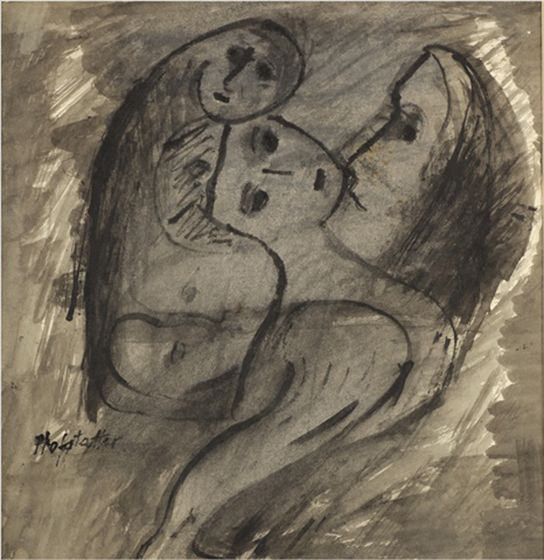Thoughts on Osias Hofstatter
By Oded Keidar (July 29, 2024)
In the last decade, dozens (maybe even hundreds) of Osias Hofstatter's works have passed under my eyes.
The viewer of his works is advised to give free rein to thought before feelings; To bend a little and look through a narrow porthole to a night theater, where grotesque figures, haunted by fate and fragile, are dancing and jumping, lost through them in the nettles of the fantastic dimension into the inner world, bustling under a shell, full of the tension of secretly carrying a secret.
At the beginning of his career Hofstatter painted in an academic style and then he turned to realistic drawing, from observation, mainly portraits sculpted in plaster but also street scenes of Vienna and Brussels. During the war, he painted portraits and daily routine in the concentration and detention camps where he was imprisoned and they have an important historical-documentary value: Le camp de Gurs, and Saint Cyprien where artists and painters were imprisoned, mainly from the Low Countries and Germany, the most famous of which was the painter Felix Nussbaum (Felix Nussbaum) who perished in Auschwitz-Birkenau. After the war he returned to Switzerland and then began teaching art in Warsaw.
Hofstatter is usually associated with the movement of "Holocaust painters". That is, painters whose body of work deals with trauma, with the dark sights and feelings of that time, which was burned into their skin and flows through their blood vessels and is expressed in a constant probing of the wounded soul; Fear clutching the throat, escaping from one hiding place to another and reducing oneself to a surviving organism. It is a simplistic and common mistake to associate Hofstatter with this group and it indicates a basic lack of understanding of an artist's moods and tumultuous moods as well as flattening his fascinating and layered world. It is worth saying - biographical elements are indeed shards of glass that make up his delicate and unique work, but his world is a tangled discourse of signs and symbols, of stifled passions, of existential absurdity. But alongside these also appear eroticism, humor and empathy. And to quote his own words "I am a tragic optimist".
At the end of 30 years since he left the world, it seems that his work has not yet matured into wide exposure and recognition of its importance, with the exception of Yair Gallery, which frequently exhibits his works ("The Exposed Nerve", 2011, "Eyes, don't haunt me" 2017), and the Herzliya Museum of Art ("Two-Faced and Trans-Erotic", 2017, " Heads, and a Painting Within Them" 2024).
Probably forever Hofstatter will remain the secret of knowledgeable collectors and historical value in the art catalog of "Yad Vashem".
* The translation brings the spirit of things

